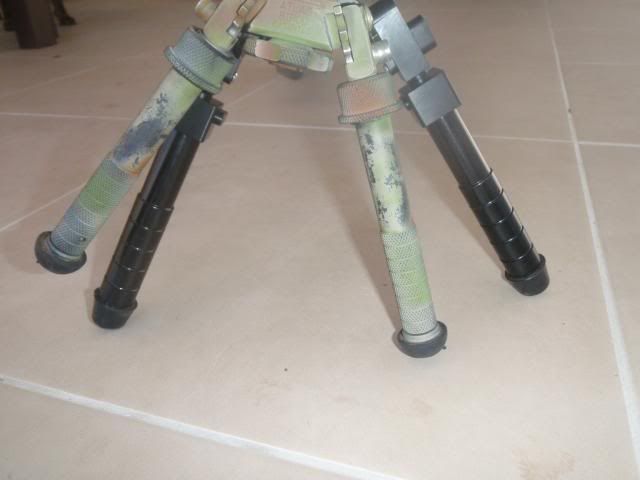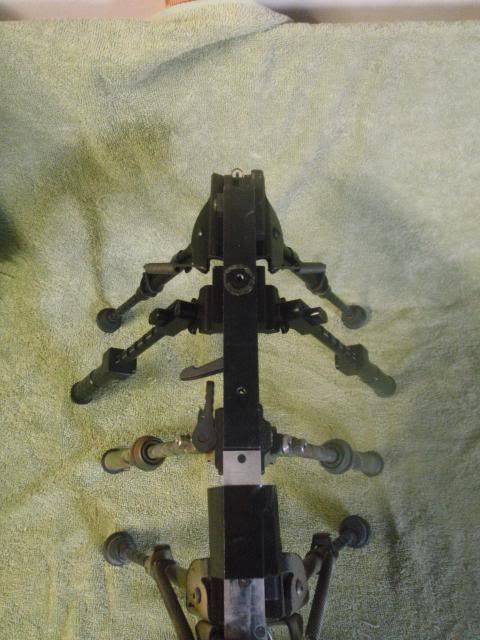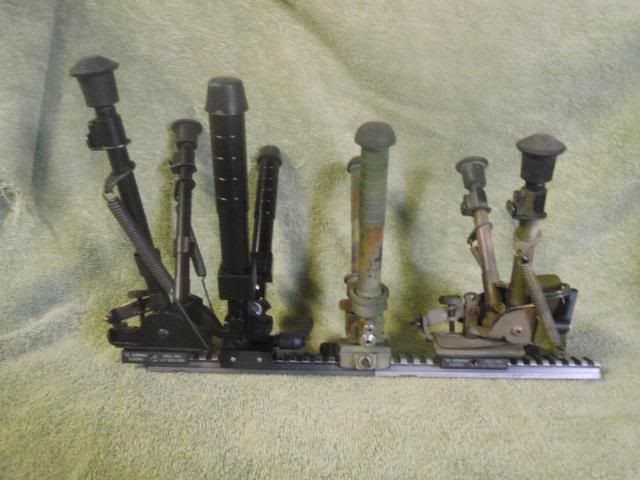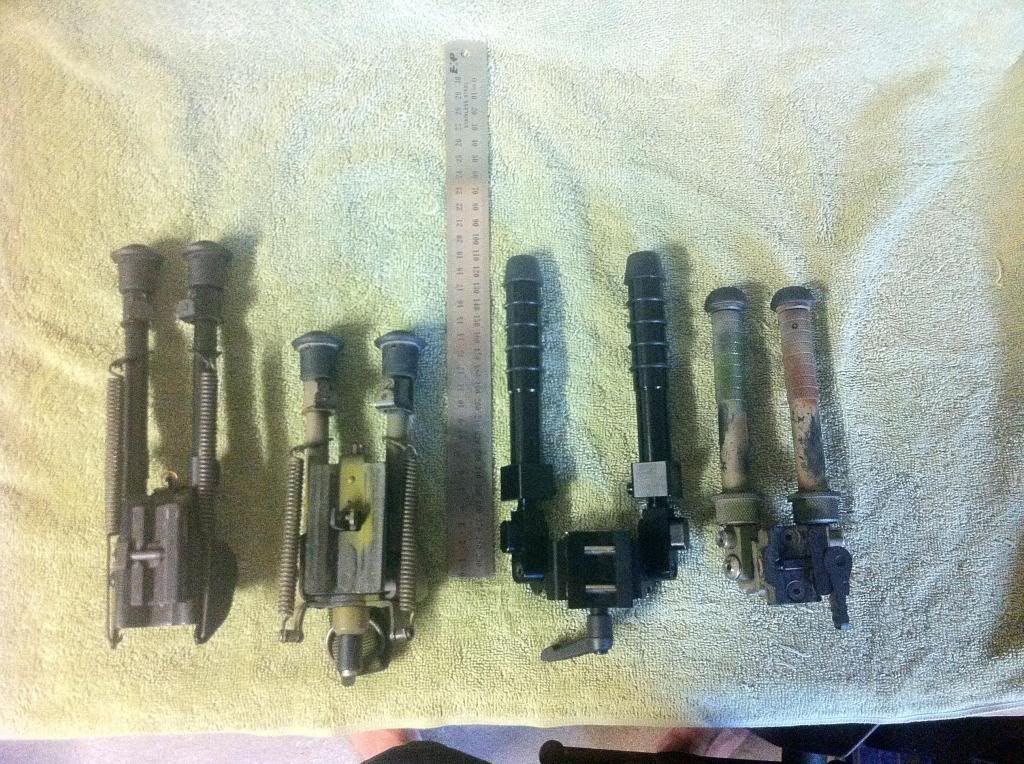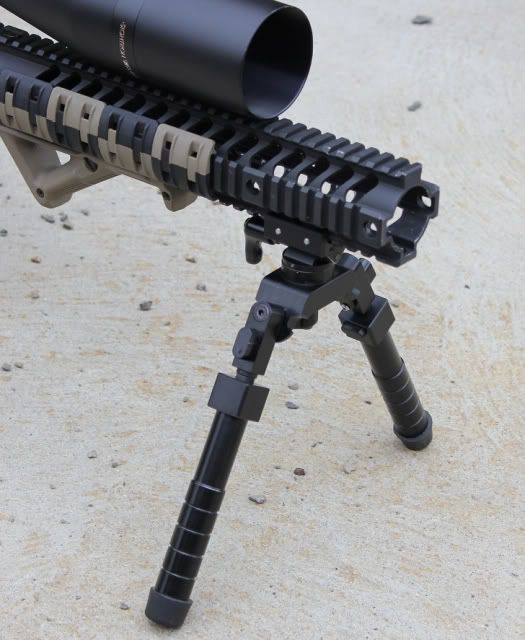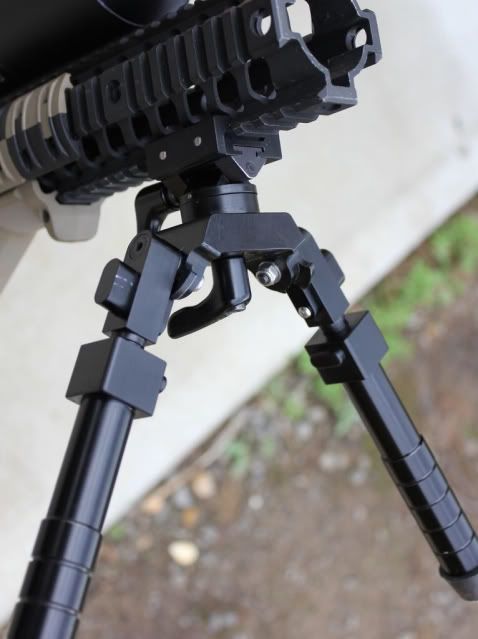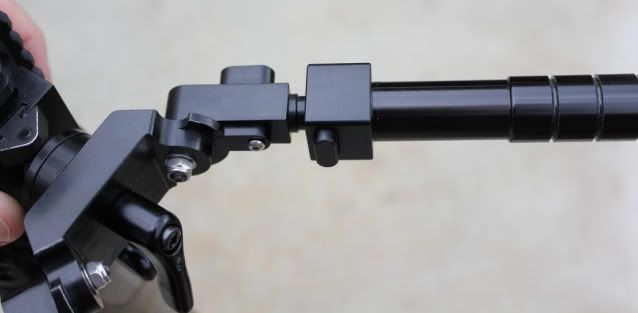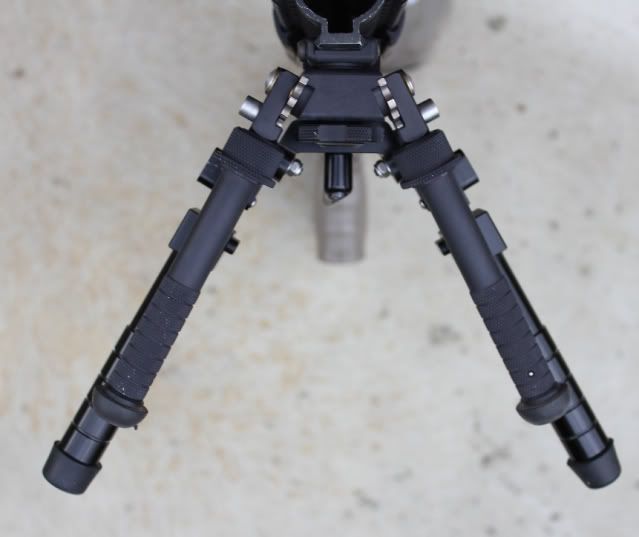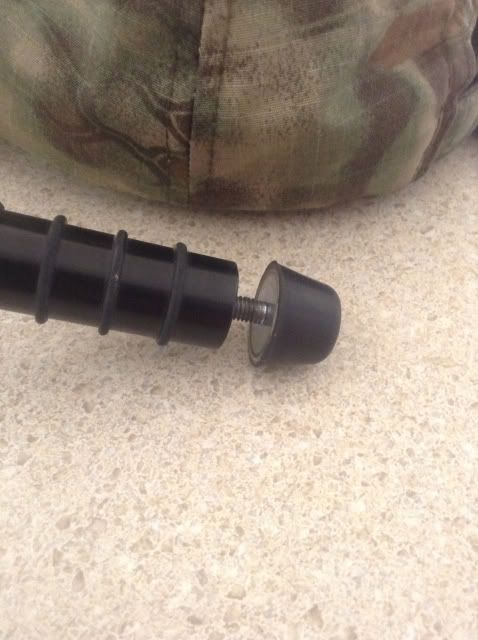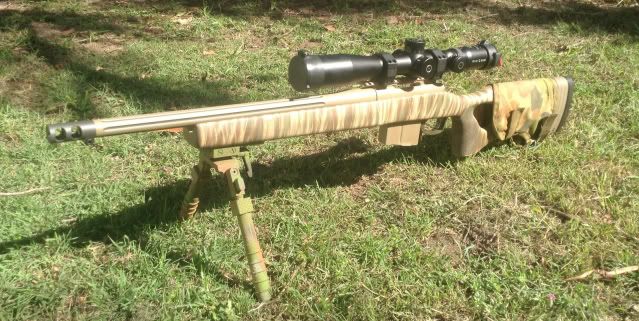Here is a write up I did for up for an Aussie shooting forum of a new to the market bipod made here in Australia, which after about 2 years of design and development was recently debuted at IWA, so I thought I'd also share it here.
cheers,
JJ
The Predator Bipod is the conception of the Australian company Apex Combat Technologies. It is proudly designed and manufactured within Australia, and has been a collaboration of industry, sporting and defence long range shooters. The Predator is available in both a Pan and tilt version and a cant only variant aimed more for target shooters, which is what will be reviewed here.
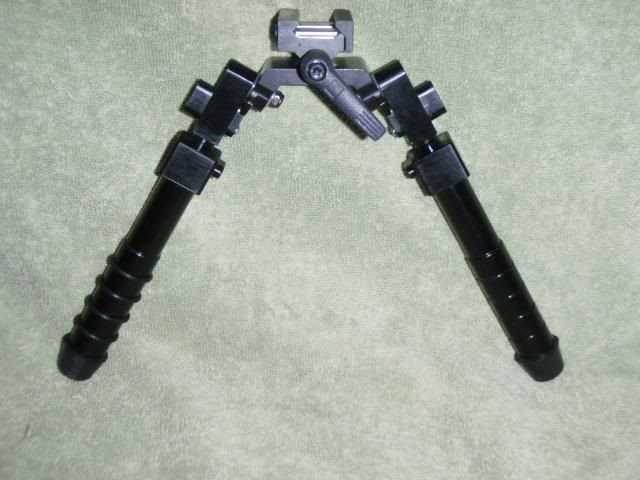
Initial Observations and Construction
Initial impressions are that it is big, but deceivingly light for its size. As you can see in the comparison, it dwarfs the Accu-shot Atlas V8 bipod, yet is only 58 grams heavier. The wide leg stance and range of cant seems more reminiscent of the LRA bipod than the Atlas, but throughout this review the predator will be directly compared to the Atlas as well as what has been the industry standard for many years, the Harris bipod.
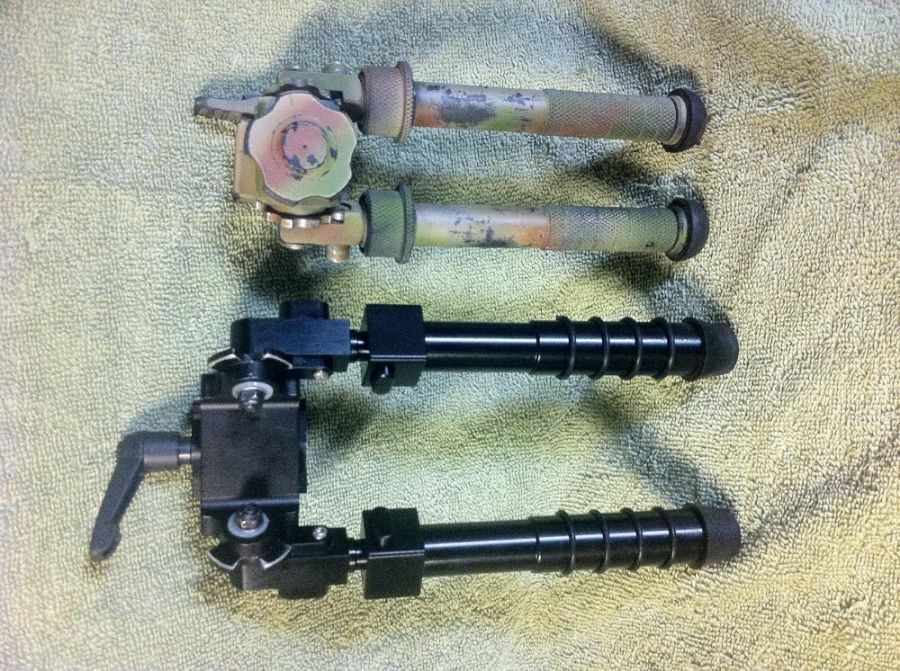
The Predator is constructed from 7075 aluminium which has been treated with type III hard coat anodising, finished in a consistent gloss black. The leg shafts and all the fasteners and cross pins are 316 stainless steel making it very durable and robust while minimising excessive weight.
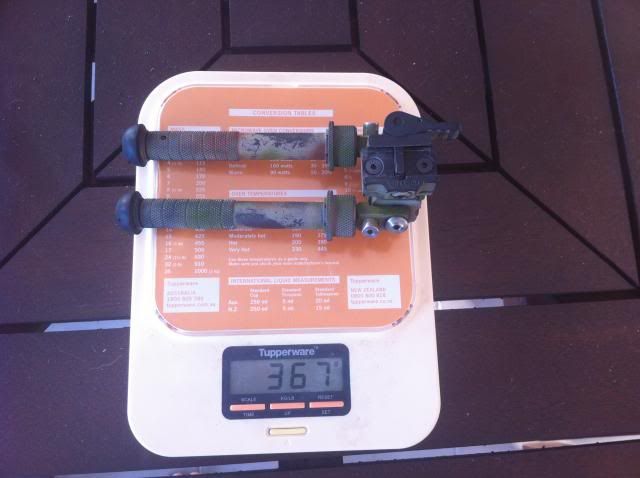
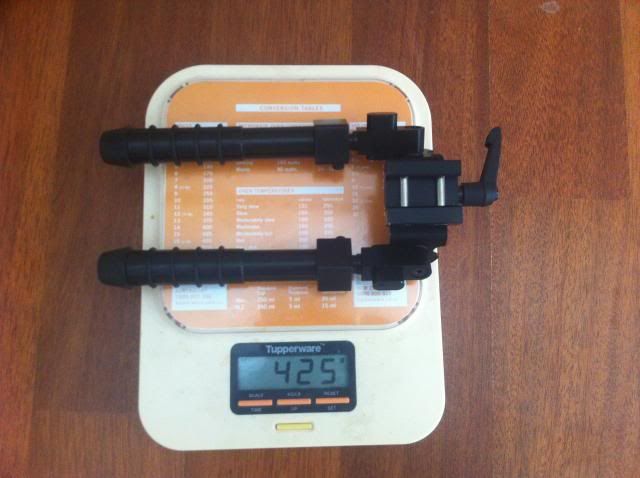
The Predators legs are 3 position adjustable through 0, 90 and 180 degrees with the use of a spring loaded push button that locks into machined recesses on the baseplate. The legs are a leg over shaft design that are height adjustable with a spring loaded push button from 15cm to 24cm, raising the weapon from 19cm to 27cm above the ground via the 6 notched positions machined into the inner leg shaft. The push button allows an easy one handed height adjustment of the bipod whilst prone behind the weapon.


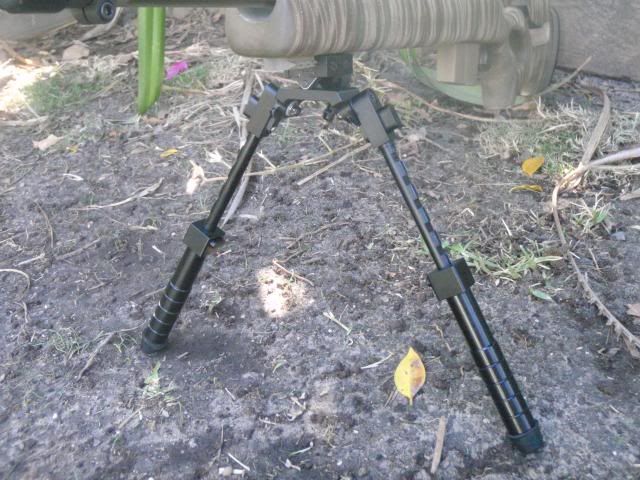
The outer legs themselves are a machined one piece construction with grooves machined into the lower portion for grip and large hard rubber feet providing non slip grip on both concrete and wooden surfaces. The lower legs are constructed so as to remain in position and not roll across the surface when applying preload to the bipod, like with the harris series bipods.
The Predators wide stance provides greater stability through an almost 45 degree angle of the base plates mounting shoulder. The feet are 25cm apart on the fully lowered position. This wide stance makes the Predator a very stable setup for rifles chambered in heavy recoiling calibres such as 12.7mm BMG, 375cheytac (which it has been tested on) as well as for target rifles as a substitute for the large F class/competition style bipods. It is equally at home on conventional stocks as well as the railed fore ends popular with the chassis market these days.
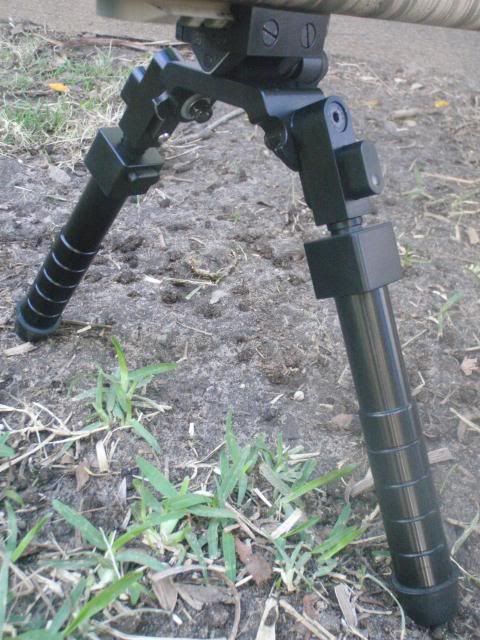
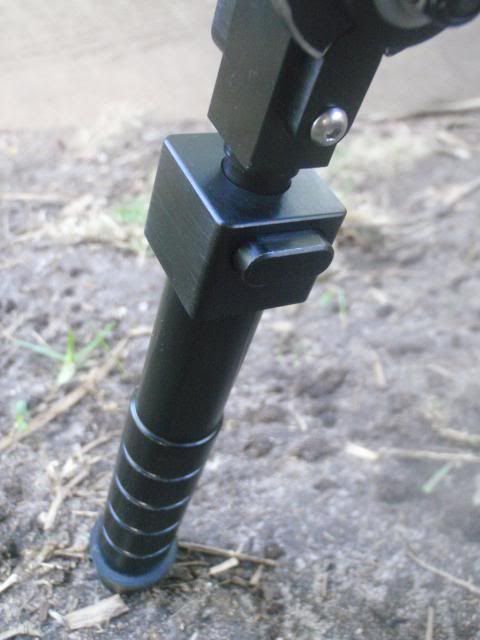
My one critique at this stage is that the predator’s controls and legs lack any texture or knurling which would greatly aid in grip with wet, slippery or gloved hands. A quick fix I used was fitting rubber o-rings into the groves for extra grip to aid in the extension and retraction of the legs.
The cant angle is provided by a large hinge machined into the base plate which is controlled through the use of the familiar pod-loc and provides approximately 45* of cant. The cant adjustment doesn’t lock off 100% completely however applies enough tension to restrict any way ward movement, and after some use it has improved so now It won’t move unless the shooter wants it to move. The bipod mounts to the rifle through the use of a picatinny rail clamping mount with dual stainless screws which double as indexing lugs for the rail itself.
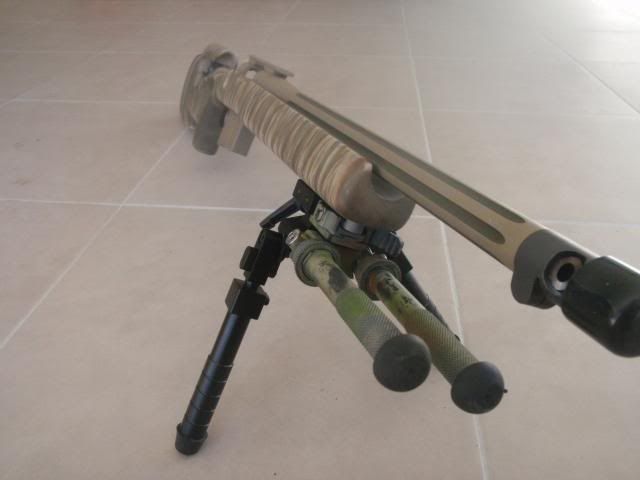
Here you can see the amount of angle available in the cant which is very handy when setting up on uneven ground.
cheers,
JJ
The Predator Bipod is the conception of the Australian company Apex Combat Technologies. It is proudly designed and manufactured within Australia, and has been a collaboration of industry, sporting and defence long range shooters. The Predator is available in both a Pan and tilt version and a cant only variant aimed more for target shooters, which is what will be reviewed here.

Initial Observations and Construction
Initial impressions are that it is big, but deceivingly light for its size. As you can see in the comparison, it dwarfs the Accu-shot Atlas V8 bipod, yet is only 58 grams heavier. The wide leg stance and range of cant seems more reminiscent of the LRA bipod than the Atlas, but throughout this review the predator will be directly compared to the Atlas as well as what has been the industry standard for many years, the Harris bipod.

The Predator is constructed from 7075 aluminium which has been treated with type III hard coat anodising, finished in a consistent gloss black. The leg shafts and all the fasteners and cross pins are 316 stainless steel making it very durable and robust while minimising excessive weight.


The Predators legs are 3 position adjustable through 0, 90 and 180 degrees with the use of a spring loaded push button that locks into machined recesses on the baseplate. The legs are a leg over shaft design that are height adjustable with a spring loaded push button from 15cm to 24cm, raising the weapon from 19cm to 27cm above the ground via the 6 notched positions machined into the inner leg shaft. The push button allows an easy one handed height adjustment of the bipod whilst prone behind the weapon.



The outer legs themselves are a machined one piece construction with grooves machined into the lower portion for grip and large hard rubber feet providing non slip grip on both concrete and wooden surfaces. The lower legs are constructed so as to remain in position and not roll across the surface when applying preload to the bipod, like with the harris series bipods.
The Predators wide stance provides greater stability through an almost 45 degree angle of the base plates mounting shoulder. The feet are 25cm apart on the fully lowered position. This wide stance makes the Predator a very stable setup for rifles chambered in heavy recoiling calibres such as 12.7mm BMG, 375cheytac (which it has been tested on) as well as for target rifles as a substitute for the large F class/competition style bipods. It is equally at home on conventional stocks as well as the railed fore ends popular with the chassis market these days.


My one critique at this stage is that the predator’s controls and legs lack any texture or knurling which would greatly aid in grip with wet, slippery or gloved hands. A quick fix I used was fitting rubber o-rings into the groves for extra grip to aid in the extension and retraction of the legs.
The cant angle is provided by a large hinge machined into the base plate which is controlled through the use of the familiar pod-loc and provides approximately 45* of cant. The cant adjustment doesn’t lock off 100% completely however applies enough tension to restrict any way ward movement, and after some use it has improved so now It won’t move unless the shooter wants it to move. The bipod mounts to the rifle through the use of a picatinny rail clamping mount with dual stainless screws which double as indexing lugs for the rail itself.

Here you can see the amount of angle available in the cant which is very handy when setting up on uneven ground.
Last edited:

